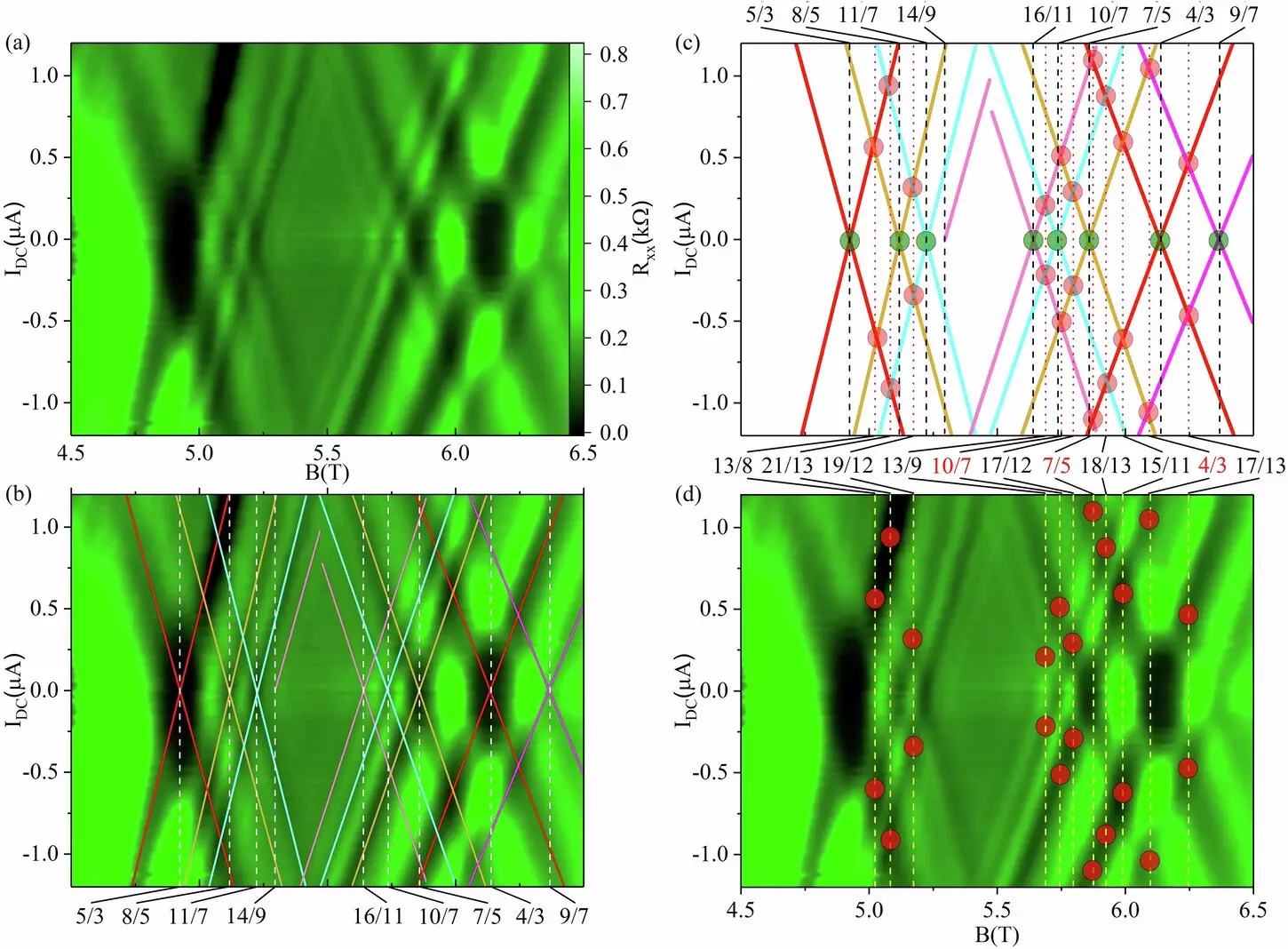In a theoretical landscape devoid of our familiar three-dimensional perspective, researchers are venturing into the intriguing world of “flatland,” delving into bizarre electronic phenomena that challenge conventional understanding. Recent studies led by Georgia State University’s Professor of Physics, Ramesh G. Mani, alongside U. Kushan Wijewardena, have yielded groundbreaking insights into fractional quantum Hall effects (FQHE). Their findings, published in the journal *Communications Physics*, reflect a paradigm shift in how we comprehend electron behavior under extreme conditions. By pushing the limits of traditional quantum physics inquiries, the researchers are revealing unexpected layers of complexity within these two-dimensional systems.
The quantum Hall effect, a cornerstone of condensed matter physics since its inception, gained significant attention when Klaus von Klitzing was awarded the Nobel Prize in 1985 for his landmark discovery. He revealed that a straightforward electrical measurement could yield precise values of fundamental constants, illuminating some of the universe’s intrinsic behaviors. Subsequently, recognition continued as the fractional quantum Hall effect provided compelling evidence that particles, once perceived to possess integral charges, could display fractional values. This monumental discovery propelled further investigations into the behavior of materials like graphene, which showcased the existence of massless electrons in two-dimensional frameworks. The continued exploration of these topics culminated in multiple Nobel Prizes, underscoring the importance of condensed matter physics in shaping modern technology.
With the research’s focus on high-quality semiconductor materials, the team placed their devices—consisting of gallium arsenide (GaAs) and aluminum gallium arsenide (AlGaAs)—under extreme conditions, including a temperature near absolute zero and an exceptionally strong magnetic field. Their strategy involved applying a direct current to the devices, an approach that unearthed unforeseen splittings and crossings of the fractional quantum Hall effect states. These discoveries enable the exploration of excited, non-equilibrium states and have illuminated the potential of revealing new phases of matter otherwise overlooked in traditional experimentation.
By likening their explorations to “opening the upper floors of a building,” Mani emphasizes the significance of their findings. What was once viewed as the foundation of understanding the fractional quantum Hall effect has transformed into a quest for hidden, more intricate levels of electron behavior that deviate from established theories.
The research not only broadens the understanding of the fractional quantum Hall effects but also challenges existing theoretical frameworks that have predominated in this field of study. According to the researchers, their observations may suggest a hybrid phenomenon for the excited states of FQHEs, one that could merge classical interpretations with novel quantum insights. This convergence of ideas highlights the continual evolution of physical theories and encourages future explorations that could further redefine our grasp of electron dynamics.
At the core of this research is the recognition that high-quality crystal structures are imperative for success. Collaborating with Swiss Federal Institute of Technology Zurich experts, Mani and Wijewardena harnessed top-tier materials that facilitated their advanced examinations of quantum phenomena. The meticulous nature of their experimental designs has opened doors to new realms of inquiry.
The ramifications of this groundbreaking study extend well beyond academic inquiry. As researchers delve deeper into these quantum mechanics phenomena, there are exciting possibilities on the horizon for technology and applications in various fields, including quantum computing and materials science. The promise of developing energy-efficient electronics, coupled with innovative sensors and advanced solar cells, signifies a potential revolution in technological capabilities. By refining our understanding of flatland physics and pushing boundaries, these advancements could lay the foundational work for emerging technologies that enhance efficiency and performance across multiple sectors.
As the team, now expanding their experimental scope to even more extreme conditions, continues to probe these enigmatic quantum systems, the landscape of condensed matter physics remains ripe for exploration. Each new insight garnered from their endeavors invites us closer to unraveling the complexities inherent within these peculiar electronic behaviors. The efforts of Mani, Wijewardena, and their collaborators encapsulate the spirit of scientific inquiry—a journey of questioning, discovery, and relentless pursuit that could redefine the future of physics and technology as we know it.

